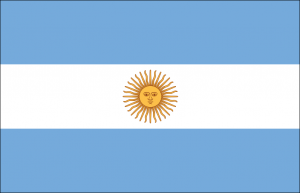 Eleonora Rabinovich, Digital Rights LAC, Link (CC-BY-SA)
Eleonora Rabinovich, Digital Rights LAC, Link (CC-BY-SA)
The Argentine Supreme Court has finally published its ruling on intermediary liability. The Court, grounded on strong principles, solved an issue which had generated contradictory and-in many cases-problematic jurisprudence within the country. However, there are still some issues which shall be clarified by future regulations.
The case began due to a claim filed by the model Belén Rodríguez against Google and Yahoo! concerning the linking of her name with several webpages and the alleged misuse of her image. In Argentina, there are more than 150 cases of this nature in process. In general, plaintiffs in these cases demand the elimination of the link between their name or image and the webpages which supposedly harm them. In some cases, plaintiffs seek economic compensation for damages. So far, there has been a set of decisions about the merits of the case: most of the jurisprudence developed relates to precautionary measures which order to erase the results of searches that actors consider as violations of their rights.
Therefore, the case was crucial to solve one of the most relevant issues concerning freedom of expression on the Internet discussed worldwide. The Court had even called for a public hearing in order to listen to the parties and the “amici curiae” (“friends to the court”). Which was the core of the issue? In order to publish, search and receive information users need a large number of intermediaries –access providers, Internet search engines, platform administrators, among others –which become crucial agents within the open and decentralized architecture of the Internet. Internet search engines are, in particular, necessary intermediaries in the flow of information: without them, we could only access to information that we know exists. The key question is whether such intermediaries should be held liable for content generated by users and to what extent or under which conditions.
Internet search engines have an excessive power since they are necessary intermediaries: a democracy must be concerned with not encouraging them, through a liability regime, to exercise such power in a way that limits public debate on the Internet. In this regard, the Court’s decision sets some important principles. First, the Court conclusively states that Internet intermediaries cannot be subject to any form of strict liability, which was the plaintiffs’ requests. The Court rejects the application of a strict liability regime which acts independently from the intermediary’s conduct –for example due to the “risk” of the activity- since that would impose a duty of surveillance which is not consistent with human rights principles. The application of a strict liability regime to intermediaries, according to judges, would be like holding a library liable for allowing, through its catalog, the tracing of a book with illicit content. The judges are conclusive: such a regime violates freedom of expression.
However, the Court holds that intermediaries can be held subjectively liable for content generated by third parties when they have “actual knowledge” of the illicit content and –from that moment- they do not act “diligently”. And how do intermediaries have “actual knowledge”? Regulatory models vary on this point: some, such as the controversial Digital Millennium Copyright Act, allow the elimination of contents upon notice by an individual arguing that there has been copyright infringement. Others, such as the Brazilian Civil Rights Framework for the Internet or the Copyright Law of Chile, stipulate the principle of judicial notice as a rule, which is set forth by agencies of the universal and inter-American human rights system.
The Argentine Court makes a distinction. To begin with, the notice must be served by competent judicial or administrative authority which –after considering the rights at stake- states that a given content is illicit and shall be removed. Nevertheless, in cases of “manifest illegality”, the option of private notifications becomes available. The Court gives some examples regarding such contents (child pornography, advocacy of genocide or incitement to violence, “notoriously fake assembly of images”, etc.), in a not limited list which generated some criticism concerning the problems that may arise when applied. A legal regulation shall clear up such uncertainties. However, it is clear that these cases must be read restrictively in the light of the same freedom of expression principles set forth by the Argentine Court and the international human rights system.
On the other hand, the Rodriguez case is also important since it raised the discussion about the right to images related to images search engines in Google. The Court considered that the same liability principles explained above apply to thumbnails. Finally, the Court ruled by a majority of votes –with the striking dissident votes of two judges: Lorenzetti, the President of the Court, and Maqueda- that it is not possible to establish a precautionary protection on the contents of the Internet. That is to say, precautionary measures which order the removal of contents must be adopted only in exceptional cases since they are highly presumed to be unconstitutional. (Rodríguez had demand that the search engines adopted a filtering system to prevent similar search results appearing in the future, a request that the lower court had denied).
In conclusion, the Court’s ruling sets a valuable precedent with an impact which will surely be extended to jurisprudence and regulatory discussions within the region.
*Executive Director of ADC




